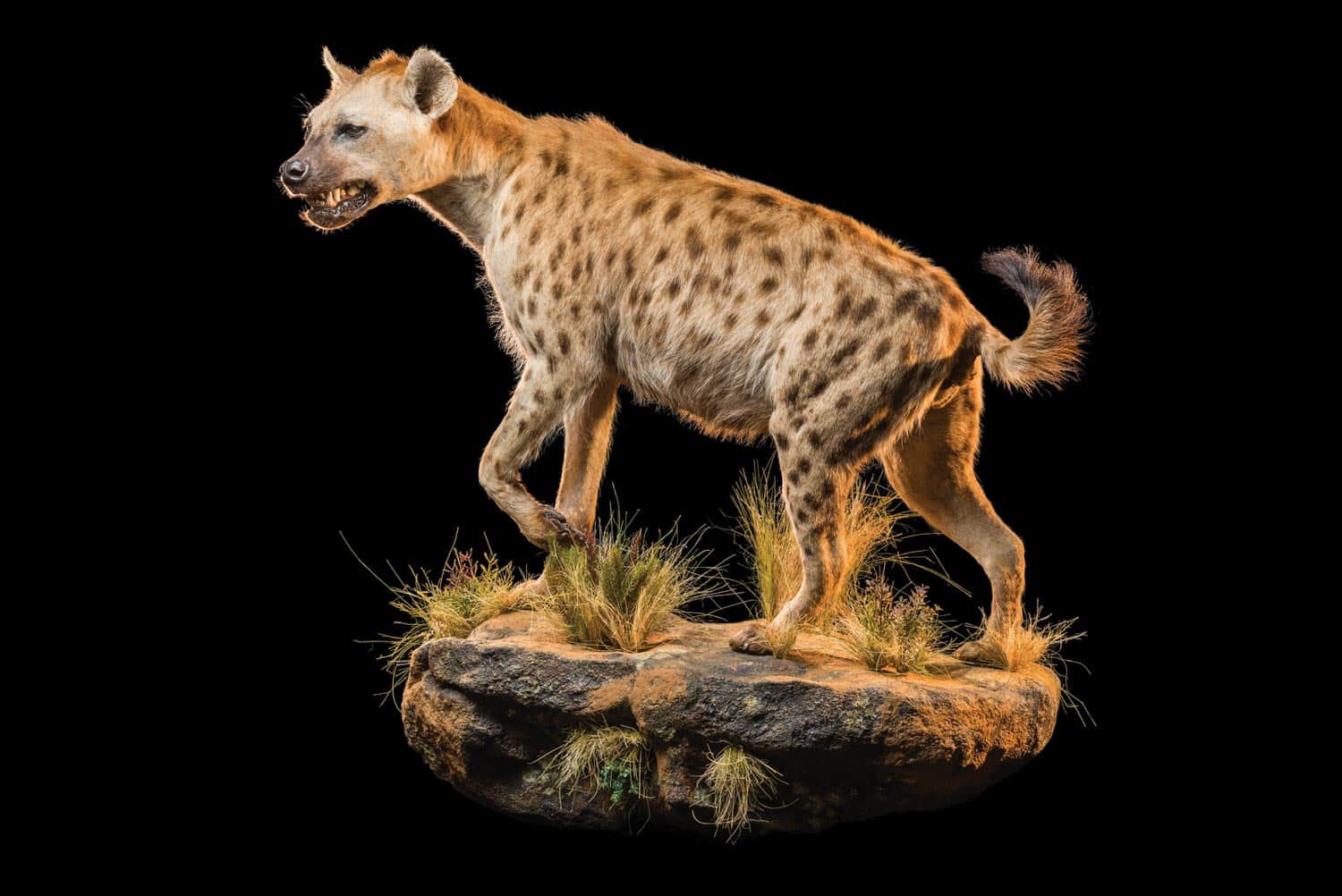You’ve just harvested an exceptional game hunting specimen on your African hunting safari and realize that it is the perfect addition to your hunting trophy room back home…but what now? Where to from here? How do you choose the best taxidermy option for you?
Learn more about the art of taxidermy in game hunting, the pros and cons of using an African taxidermy specialist, techniques utilised, and more!
[DYNAMIC-BLOGTABLEOFCONTENT]
Key Takeaways
- Taxidermy is the art of preserving an animal’s body through stuffing or mounting for display purposes.
- Taxidermy allows hunters to relive the memory and thrill of hunting in Africa with a variety of mounting options to preserve for their game hunting trophy.
- From a simple skull mount to a life size mount, the sky is the limit – but can be pricey.
- Taxidermy can add thousands of dollars to an African hunt, be prepared and carefully consider which option would best suit you and your specific requirements.
- There are numerous steps involved in processing and preparing a game hunting trophy from field to trophy room.
- When choosing a taxidermist, be sure to thoroughly research and see which company would best meet your specific needs.
- There are both advantages and disadvantages to using an African taxidermist and a local one in your home country. Be sure to choose carefully. Again, consider what would best suit your needs and budget.
- Common species that are often chosen for taxidermy include African plains game (kudu, springbok, impala), Dangerous Game (lion, leopard, elephant), as well as Specialty Game (hyena, bushpig, warthog).
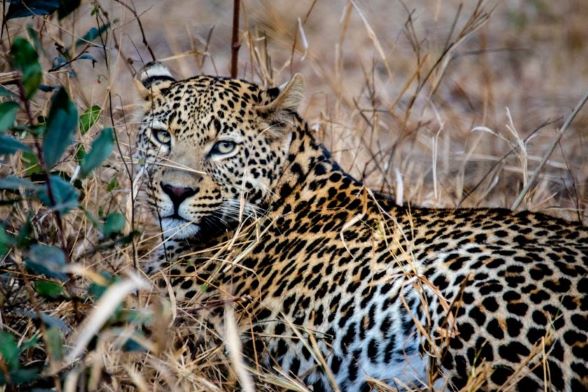
What is Taxidermy?
Taxidermy is the art of preserving an animal’s body by stuffing or mounting, for display purposes. Animals that are preserved are often, although not always, portrayed in a lifelike stance or scene, for example a lion getting ready to pounce on a large kudu antelope.
The term “taxidermy” is derived from the Greek words taxis (meaning “arrangement”) and derma (meaning “skin”), which together suggest the “arrangement of skin.”
Taxidermy can be carried out on fish, reptiles, birds, and mammals.
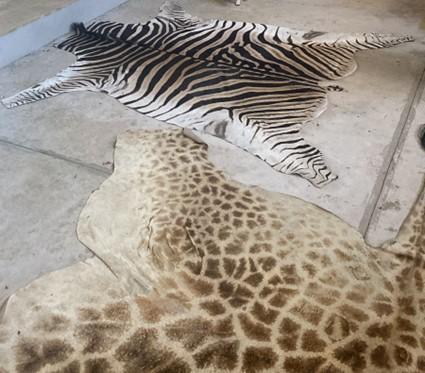
Taxidermy Requirements: Things to Consider Prior to Your African Hunt
While your African hunt may be over, the memories of your hunting safari can be lingering as you cast a glance over to your trophy room, adorned with an array of African game species from recent safaris. This is, of course, if you had your harvested animals taxidermied, using various mounts, rugs, and skull options to best display your trophies.
Something to consider before your hunting safari is, of course, the option of taxidermy, which can be quite costly and add a good sum to the cost of the African hunt. Apart from that, you need to consider space in your home or trophy room, as some mounting options are larger than others. Will a rug rather do, or perhaps a skull mount or even a pedestal mounted hunting trophy rather than a full life-size mount? These are all options to consider that influence taxidermy decisions as well as costs.
After taking all this into account, another consideration is utilizing an African taxidermy specialist, or rather shipping the trophy home for processing by a local taxidermist in your home country. Each option has its own set of advantages and disadvantages.
Using An African Taxidermist
Advantages
- African taxidermists have extensive experience in working with local species and are familiar with everything from the animal’s anatomy to posing the animal in a natural manner. This allows a local African taxidermist to create and replicate accurate, lifelike taxidermy products.
- They are also familiar with local species and are likely to be better equipped to bring your ideas to life, their background knowledge equipping them to navigate the world of African taxidermy.
- They are also fully aware of local rules, regulations, permits and the required documentation.
- Using an African taxidermist may see lower taxidermy costs, as generally the labor costs are less.
- Many African taxidermists offer fully inclusive packages, including skinning, tanning, mounting and packing. When combined, these may well work out cheaper than paying for individual goods and services overseas.
- Knowledge, experience, and excellent workmanship can result in better quality mounts versus a taxidermist that has not had as much experience with African hunting trophies.
- Not shipping raw trophies internationally can also reduce costs.
- The immediate processing of the skins and other materials ensures that they are better preserved and reduces the risk of damage during the logistical process.
- By using a local African taxidermist, the hunter is supporting local business and contributing to employment for the surrounding community.
- There are fewer steps in the process, which means less handling of the trophy.
Disadvantages
- Not all African taxidermists deliver the same solid quantity service. Without proper research, a hunter may find himself disappointed with the process or the eventual trophy received. A reminder to fully research the taxidermist prior to using them, get references, see other finished products that they completed before making a final decision.
- While processing the trophy onsite is an advantage, transporting completed mounts may be challenging and includes a risk of damage to the crated mounts while being transported.
- Language and cultural differences may come to the fore here and complicate communication concerning the trophy and your expectations.
- Challenges may arise during communication with different time zones between your African-based taxidermist and your home country.
- The situation may become difficult when problems arise, and you are on the opposite side of the world.
- Should there be an issue with the trophy once it reaches your home and have been paid for, it may be difficult to rectify the problem.
Using a Taxidermist in Your Home Country
Advantages
- Working with someone who is familiar with your language and culture can assist when it comes to communicating about the trophy requirements and preferences.
- Using a local taxidermist will also be advantageous when it comes to the expected quality and standards.
- Should there be any challenges once the trophy has been shipped, it is easier to deal with someone local to make these changes.
Disadvantages
- One may expect higher costs when using a taxidermist in your home country, as the associated labor and expenses are generally higher than those in Africa.
- The local taxidermist might not be as familiar with African species as an African taxidermist, leading to lesser quality, or less lifelike, trophy.
- The trophy may take longer to complete, as the raw materials still needs to be shipped from Africa prior to starting the taxidermy process.
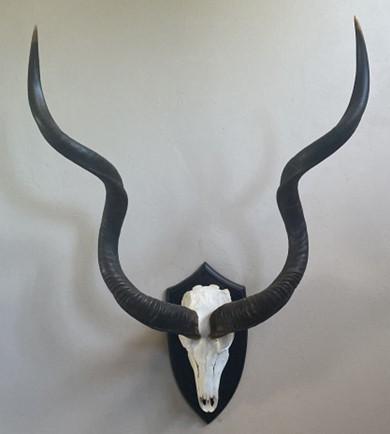
Popular Species for an African Taxidermy
African hunting safaris can certainly see some extraordinary species being targeted and harvested while hunting in Africa. When it comes to taxidermy, there are some animals that are more commonly preserved than others. It could be for a variety of reasons, including their popularity amongst the hunters, their iconic status, or even their exceptional beauty (for example a zebra’s striking striped pelt or a kudu’s majestic horns). Whatever it is, each species offers distinct characteristics that make them appealing choices for preservation through taxidermy.
Below find some of the most often preserved species when hunting in Africa:
African Plains Game Species
- The kudu is renowned for its majestic and impressive curved horns that can reach up to 6 feet. Known as “king of the spiral-horned antelopes,” the kudu remains a firm favorite amongst game hunting enthusiasts.
- The springbok is an iconic South African game hunting trophy, and a good-looking antelope to mount.
- The graceful impala is often targeted and chosen for African taxidermy.
- Not all trophies are chosen for good looks, in fact some are chosen for their unique looks, in this case the blue and black wildebeest. A common target on African plains game hunts, they are often chosen for African taxidermy due to their unusual looks.
- One of the most eye-catching trophies available, the zebra is chosen for its striking black and white coat that make a spectacularly distinctive trophy, whether as a full mount or even a rug.
- The oryx (gemsbok) is another striking species, with its long, straight horns and elegant appearance, it remains a popular choice for taxidermy.
Dangerous Game Species
- Africa’s king of the jungle, the lion, is one of the continent’s most iconic apex predators, with hunters that have harvested their trophy wanting to display it within their trophy rooms.
- As one of Africa’s shyest, most elusive cats that are extremely difficult to hunt, leopards are also known for their exquisite pelts, which makes them a sought-after African trophy.
- While certainly not the smallest in terms of taxidermy subjects, elephants can be truly spectacular when correctly taxidermied.
- The menacing and formidable Cape buffalo is yet another popular dangerous game hunting trophy.
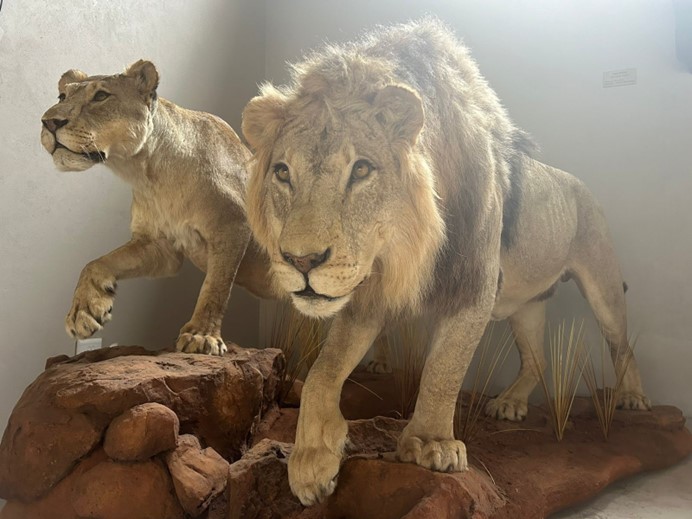
Specialty Game Species
- Bushpig taxidermy is growing in popularity with hunters.
- These African predators have a rather unique appearance, which sees hyenas being sought-after trophies.
- The warthog with its tusks also proves to be popular amongst the hunting community

From Bush to Trophy Room: What Are The Steps Involved?
Your African hunt is completed, you’ve just harvested your trophy African plains game antelope, and you have already decided that this is one species that needs to be displayed in your trophy room back home. But what happens now? What is the process to get that animal from deepest, darkest Africa to your trophy room, thousands of miles away?
Let’s take a quick look at the process…
In the Field
Firstly, the animal is skinned. Once the animal is skinned, it is left in salt until your game hunting safari is complete, after which it is delivered to or collected by your chosen taxidermist.
At The African Taxidermist
If you are sending the trophies onwards and to your home country to be processed and mounted, they will still need to be either tanned or dipped and packed. Dipping and packing (also referred to raw prep or solution-treated) involves the skins being treated then dried, while the skulls are boiled. Tanning (also referred to as cape tanning or dry tanning) involves the hides being fully tanned, ready to be mounted.
For local processing by an African taxidermist, the hides are fully tanned, while the skulls are boiled, cleaned and then undergo a bleaching process.
The mounting is then completed, with the wet hide being placed onto the form or mannequin where it is shaped and stitched. Once this step is completed, then the drying process commences. Once dry, the finer details of the mount are then completed, including the eyes and lips, with a perfect, quality trophy being the end result.
Once the entire taxidermy process is completed, the hides, mounts, or skulls are crated and ready for transport.
Shipping: Export & Import
Most taxidermists do not handle their own shipping but rather make use of recognized experts in the logistics industry to handle it.
These shipping agents will then deal with all the necessary documentation, administration and permits related to the export and import of the trophy. They will also transport the item(s) to the destination from where they will be shipped, either by water or air.
Upon arrival in the destination country, the shipping agents will again deal with permits and fees payable, get the item(s) cleared by customs and the relevant wildlife authorities and bodies as required.
Once Your Trophy Arrives in Your Home Country
Upon arrival and after being ready to be released by the shipping agents, your African game hunting trophy will be dealt with in one of two ways. Firstly, should the trophy have been completed by a local African taxidermist, it will then be delivered to you, or collection can be arranged.
Secondly, it is collected by the local taxidermist. Should the trophy have undergone the tanning process in Africa, the taxidermist will now complete the mounting of the hunting trophy, following the process as laid out above.
Should the trophy have undergone a dip and pack, the taxidermist will then arrange for it to be tanned, after which the mounting will be completed, following the process laid out above.
Frequently Asked Questions
Why do people like taxidermy?
Taxidermy allows people to forge a closer connection, appreciation and understanding of nature in instances where it may not usually be possible, for example mounted displays in museums or educational institutions. In terms of trophy hunting and African taxidermy, after completing an enthralling hunting safari and harvesting a prize game hunting trophy, a hunter may choose to preserve the animal’s body and display it in his trophy room as a memory of the experience and the exceptional trophy he shot.
What do you call an animal after an African taxidermy?
While the actual word “taxidermy” refers to the process of preserving the animal, it is also used to describe the product at the end of the day. These are called taxidermy or taxidermy mounts.
What animals are commonly taxidermied?
Popular animals often targeted on an African hunt to get taxidermied include species such as:
African plains game: Kudu, zebra, wildebeest, springbok, impala, and blesbok
African Dangerous Game: lion, leopard, Cape buffalo
Specialty Species: Bushpig, hyena
How long do taxidermied animals last?
With proper care and maintenance, a taxidermied animal can last up to 20 years or more.
What animal is the most challenging to taxidermy?
Although not an animal, a snake is seen as the most challenging to taxidermy, due to their complex muscles. When the snake skin gets tanned, it also loose much of its color, resulting in each scale having to be hand painted.
Conclusion
Taxidermy provides hunters with a great opportunity to invest in a trophy that will provide a lasting memory of their time hunting in Africa. While there are many options available in terms of taxidermy, it is up to each individual hunter to do their research and see which option – and taxidermist – best suits their needs. A reminder as well that taxidermy is a costly, if rewarding, process.
Author: B. Hershensohnn
